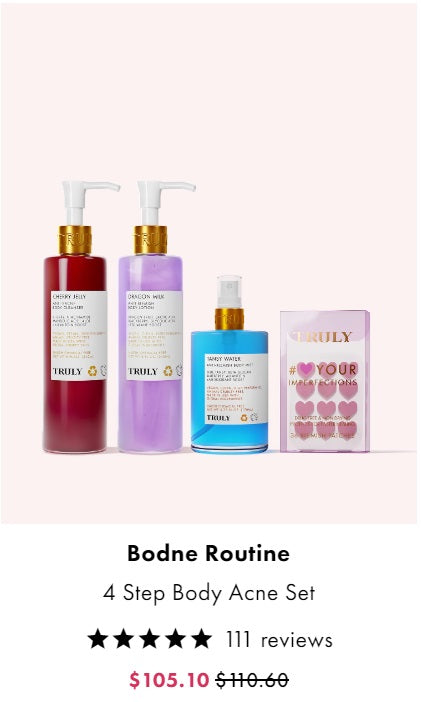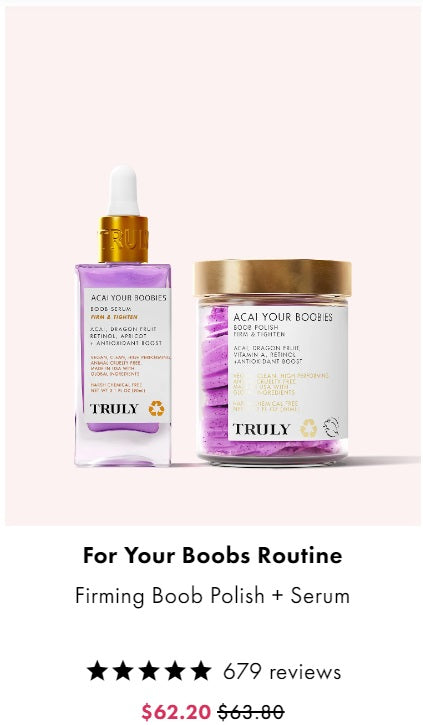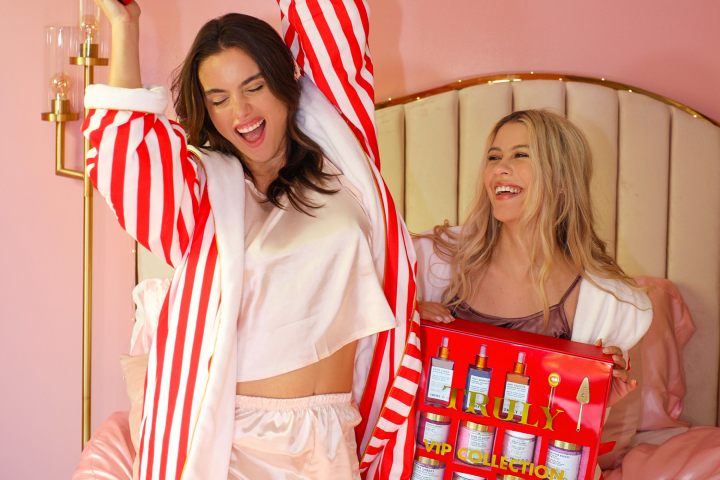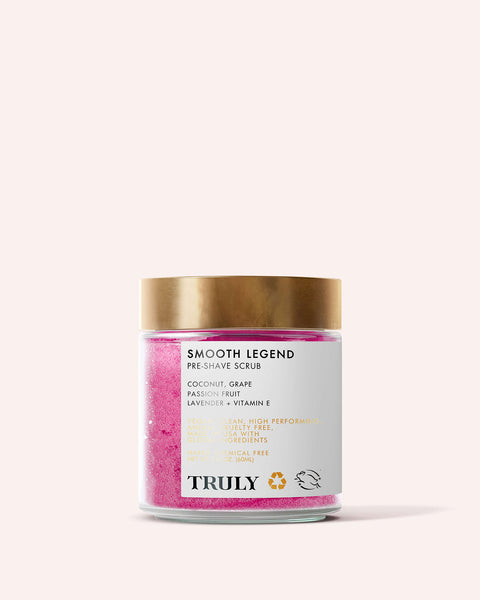Can You Use Glycolic Acid With Retinol?
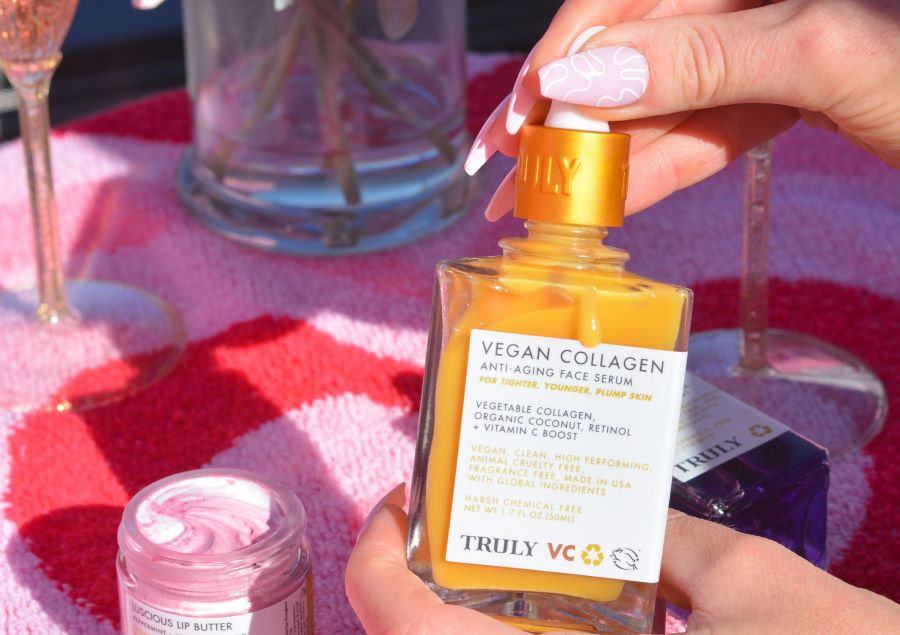
They’re both game-changers in the world of skincare, but can you use glycolic acid with retinol? Both glycolic acid and retinol are potent skincare ingredients renowned for their anti-aging, acne-clearing, and hyperpigmentation-fading properties. Can you use retinol with glycolic acid?
In this guide, we’re going to show you why you might want to include both glycolic acid and retinol in your skincare routine, and how to do it safely.
What is Glycolic Acid?
Glycolic acid is an alpha hydroxy acid (AHA) and chemical exfoliant derived from sugarcane. It works to dissolve the bonds between dead skin cells and speed up skin cell turnover, helping to unclog pores, even out skin tone, and clear acne breakouts. Glycolic acid comes in a variety of different forms and concentrations including cleansers, peels, and serums.
What is Retinol?
Retinol is a type of retinoid, and a vitamin A derivative, that’s known for its anti-aging properties. Retinol works by boosting collagen production and increasing cell turnover—helping to treat fine lines and wrinkles, hyperpigmentation, acne, and clogged pores. You’ll find it in a range of skincare products including serums, moisturizers, and masks. Can glycolic acid be used with retinol? Let’s dive into that now.
Can You Use Glycolic Acid With Retinol?
Once upon a time, people thought using glycolic acid and retinol together was a big no-no. Now, research has shown that alternating retinol and glycolic acid can be more beneficial for the skin than using just one or the other on their own.
Here’s why: glycolic acid removes the buildup of dead skin cells while retinol speeds up skin cell turnover. Together, they’re the dream team for promoting fresh, even skin. If you use retinol without an exfoliator like glycolic acid, you’ll probably end up with an accumulation of dry, dead cells on your skin.
A 2015 study found that retinol and glycolic acid used together showed efficiency in treating acne scars. Retinol promotes skin cell turnover, while glycolic acid exfoliates the skin’s surface. Together, they work synergistically to fade acne scars by shedding dead skin cells, increasing cell turnover, and promoting collagen production.
However, because both ingredients can irritate your skin, dermatologists do not recommend mixing glycolic acid and retinol at the same time.
Benefits of Using Glycolic Acid With Retinol
Glycolic acid and retinol are both powerhouse ingredients that can treat a number of skin concerns. Here are the benefits of using retinol and glycolic acid together.
✓ Combats Signs of Aging: Together, they resurface and boost collagen production, reducing the appearance of fine lines and wrinkles.
✓ Clears and Prevents Acne: While glycolic acid removes dead skin to unclog pores, retinol speeds up cellular turnover to prevent the buildup of dead cells. Together, they can decongest clogged pores to prevent future blemishes from forming.
✓ Fades Hyperpigmentation: Glycolic acid and retinol help to remove excess pigment (or melanin) and promote fresh, evenly pigmented cells—combating dark spots and discoloration in the process.
✓ Brightening: By shedding dead cells on the skin’s surface and promoting the generation of new, fresh cells, skin appears visibly brighter.
✓ Treats Acne Scars: Studies show that combining glycolic acid and retinol can be highly effective for reducing the appearance of acne scars.
How to Use Glycolic Acid and Retinol Together
Can you use glycolic acid with retinol? The derms say you can but it’s imperative to use them properly to avoid side effects such as dryness, redness, flaking, and irritation. Here’s how to use retinol and glycolic acid together safely.
Introduce Retinol
If this is your first time using retinol or glycolic acid, it’s best to introduce each active ingredient slowly into your routine to let your skin adjust. This is especially important if you have sensitive skin as both ingredients are potent and likely to trigger adverse reactions if you don’t use them right. Start using it once a week to see how your skin responds to the new product.
Look for formulations with a percentage between 0.3% and 0.5%. Even better, choose products that contain retinol and other ingredients that counteract any potential irritation, like ceramides, hyaluronic acid, niacinamide, and aloe vera.
Introduce Glycolic Acid
On the day you don’t use retinol, start using your glycolic acid product. Again, start using it once a week to see how your skin reacts. Look for formulations with a percentage between 2% and 5%. You can always increase the concentration as your skin gets used to it. But in the beginning, it is always better to start slow.
If you have dry skin or sensitive skin, choose products that contain glycolic acid and other ingredients rather than a pure glycolic acid serum which might be too harsh for your skin—at least in the early stages.
Alternate Between Morning and Night
While you shouldn’t mix glycolic acid with retinol, you can use them together in your skincare regimen. Start with glycolic acid in the morning and keep your retinol formulas for the evening.
Glycolic acid preps skin by sloughing away dead cells, enabling other products to penetrate deeper into the skin. For that reason, it’s best to use it in the morning. Since retinol is a photosensitive ingredient, it can make your skin more vulnerable to sun damage. Plus, UV rays can reduce its effectiveness. That’s why it’s best to use retinol at night.
Alternate Days
If your skin is super sensitive and can’t tolerate combining glycolic acid and retinol in the same day, use them on alternating days instead. For instance, use glycolic acid in the mornings 2-3 times a week, and retinol in the evenings 2-3 times a week. Just make sure you’re using them on different days.
Protect Your Skin
Don’t skip the sunscreen! After using your retinol or glycolic acid product, make sure you follow up with a lightweight moisturizer and SPF 30 or higher. Both ingredients can be drying so it’s important to hydrate the skin and protect it with a broad-spectrum sunscreen.
Best Glycolic Acid and Retinol Products
Whether you’re looking to treat acne, signs of aging, or give your skin a brightening boost, here are some of our favorite formulas that contain glycolic acid and retinol.
Best for Acne: Truly Bodne Routine
The Bodne Routine targets pimples and acne scars with key ingredients like glycolic acid, salicylic acid, and niacinamide. You get: a body cleanser, body lotion, body mist, and pimple patches for clearer skin in just 4 steps. The body cleanser’s so good, it won a Teen Vogue Award.
Best for Anti-Aging: Truly Vegan Collagen Booster Set
From fine lines to age spots and sagging skin, the Vegan Collagen Booster Set is here to restore youthful, radiant skin all over in five luxurious steps. Powered by retinol, vitamin C, plant collagen booster, and organic coconut.
Best for Discoloration: Truly For Your Boobs Routine
Give your breasts subtle lift and tightening effects while fading dark spots and discoloration with this iconic Acai Your Boobies duo. Made with retinol, acai, and dragon fruit, the polish and serum work to increase collagen and elasticity while nourishing the skin with powerful antioxidants to reveal bright, firm, and perkier breasts.
Side Effects of Using Retinol and Glycolic Acid
While both are considered safe, there are some possible side effects when using glycolic acid and retinol, including:
Dryness and Flaking: This is usually temporary, but it’s a good indication that you should either use the products less frequently or opt for lower concentrations. If the dryness and flaking does not go away after scaling back the concentrations or number of applications, refrain from using.
Sun Sensitivity: Always use sunscreen with SPF 30 or more when using glycolic acid or retinol, because both ingredients can increase your susceptibility to sun damage.
Redness and Itchiness: Like with most skincare products, some can cause redness and itchy skin when you first start using them. These symptoms should only be temporary until your skin adjusts to the new product.
Hyperpigmentation: While this is a rare side effect, those with a darker complexion may notice that glycolic acid leaves dark marks on your skin. To reduce the risk, limit your use of glycolic acid to 1-2 times per week, moisturize regularly, and always wear SPF.
Conclusion: Can You Use Glycolic Acid and Retinol Together?
Yes, studies show that using glycolic acid and retinol together can benefit the skin. That being said, it’s important to not mix the two ingredients, which can lead to skin irritation and dryness.
Can you use glycolic acid with retinol if you have sensitive skin? All skin types can benefit from using them together in their skincare routine. Especially those with mature and acne-prone skin as retinol and glycolic acid are powerhouse anti-aging, acne fighters. Together, these two active ingredients can help improve skin texture and tone for a smoother, brighter, more youthful-looking complexion.


